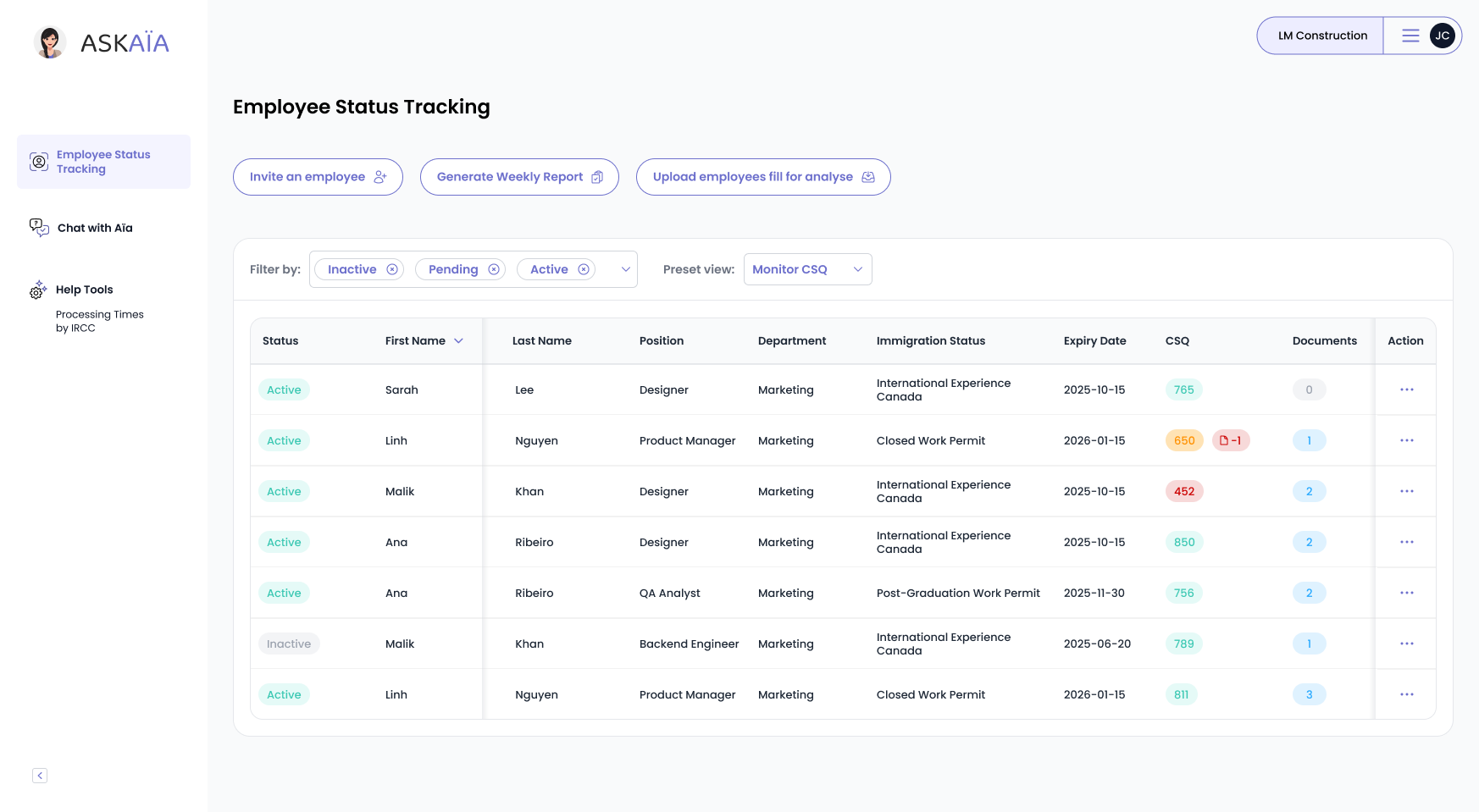Quebec Reopens PSTQ: Act Now to Secure Your PR

Quebec’s immigration door is reopening. As of July 2025, the PSTQ moratorium lifts, bringing new hope for workers and students already in the province. This update may directly affect your permanent residency options.
New rules prioritize French speakers, regional applicants, and existing temporary residents. In this article, you’ll learn how these changes impact your immigration path, who benefits, and what risks remain ahead.
What you will find in this article
Why Quebec Is Making These Changes
Quebec aims to slow population growth, protect the French language, and ensure better integration of immigrants into the labor market and society, particularly in regions facing demographic decline. These policy shifts reflect growing political pressure to preserve Quebec's cultural identity while responding to labor shortages.
After months of program freezes, Quebec will reopen its Programme de sélection des travailleurs qualifiés (PSTQ) on July 1, 2025. This major pathway for economic immigration had been suspended since October 2024. The decision signals a partial reopening of Quebec’s permanent residency intake amid broader policy shifts.
While PSTQ resumes, moratoriums on the Programme de l’expérience québécoise (PEQ) for both graduates and temporary foreign workers remain extended until November 30, 2025. Collective sponsorship applications also stay frozen until the end of 2027.
Implications for Immigrants: Who Gains Immediate Advantage
As Quebec's immigration programs shift, some groups stand to benefit more than others under the newly reopened PSTQ. Understanding who qualifies and how the new criteria apply is essential for those hoping to secure permanent residency.
The PSTQ reopening benefits:
- Temporary workers already living in Quebec who meet selection criteria, meaning they have sufficient work experience, educational background, financial self-sufficiency, and especially strong French language skills as required by the Quebec government.
- International students without active PEQ applications, who can now apply via PSTQ.
- Applicants outside Montreal gain additional selection points under regionalization policies. For example, individuals who settle in regions like Quebec City, Sherbrooke, Trois-Rivières, or Saguenay may receive bonus points aimed at encouraging immigration outside the greater Montreal area.
- French-speaking candidates receive priority, fluency weighs heavily in selection scoring. For example, applicants who demonstrate advanced proficiency through recognized tests such as TEF or TCF, and who use French regularly at work or in studies, can receive significantly higher scores during the selection process.
Those who do not meet these new preferences may face limited access, especially as future immigration caps tighten.
Key Changes in PEQ and PSTQ
While PSTQ reopens, PEQ remains limited:
- PEQ Graduate Stream: suspended for new applications until November 30, 2025.
- PEQ Temporary Worker Stream: also suspended until November 30, 2025.
- PSTQ: open to new applicants who meet work experience, education, and French proficiency criteria.
These shifts reflect Quebec’s intention to prioritize economic immigrants who are integrated linguistically and regionally.
What Lower Immigration Caps Mean for Future Applicants
While 67,000 newcomers are expected in 2025, Quebec plans a sharp reduction starting in 2026, proposing just 25,000 new immigrants annually.
Here is how Quebec's immigration levels have evolved in recent years:
| Year | Permanent Residents Admitted |
| 2022 | ~50,000 |
| 2023 | ~52,000 |
| 2024 | ~56,000 |
| 2025 | 67,000 (current target) |
| 2026 | 25,000 (proposed target) |
Sources: Québec Immigration Plans 2022-2025 — quebec.ca, MIFI; IRCC Open Data — canada.ca; preliminary 2026 target — Le Devoir, June 2025
This table shows a sharp upward trend until 2025, followed by a significant planned reduction in 2026. This drastic cut would severely limit new admissions and increase competition, especially for international students and foreign workers hoping to transition to permanent residency.
Candidates should act promptly before these restrictions take full effect.
Timeline of Key Immigration Policy Changes (2022-2026)
| Date | Key Policy Event |
| 2022 | Higher targets begin (~50,000) |
| Oct 2024 | PSTQ moratorium imposed |
| July 2025 | PSTQ reopens |
| Nov 2025 | PEQ moratorium extended |
| 2026 | Sharp cut to 25,000 announced |
Recommendations for Immigrants Navigating the 2025 Shift
- Apply early if you’re eligible under PSTQ.
- Prioritize French language acquisition to maximize selection points.
- Consider relocating outside Montreal to benefit from regional prioritization.
- Monitor PEQ updates for future reopening possibilities.
Given Quebec’s evolving policy, proactive planning is essential to secure your pathway before new limits take hold.
Not sure how these changes affect your profile? Take a free assessment with AskAïa to explore your best immigration options.

Let’s get your demo started
Book a demo
You May Also Like
These Related Stories

Canada’s New Open Work Permit Rules: What Families Must Know in 2025
Canada has tightened open work permit rules for families, limiting eligibility to spouses of certain foreign workers. Dependent children no longer qua …

Bloc Québécois and Immigration: What’s Blanchet’s Election Agenda?
Editor's Note (Election Day - April 28, 2025): As Canadians vote today in the Federal Election 2025, this article explains the Bloc Québécois' specifi …

LMIA Streams 2025: Pick High-Wage, Low-Wage, or GTS Fast
Canada’s LMIA system now operates at two speeds: eight-day approvals for Global Talent Stream roles and months-long queues or outright freezes for man …